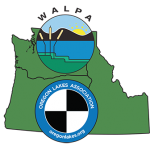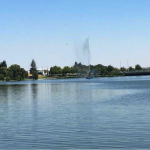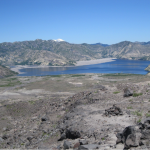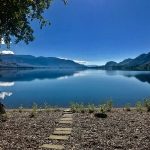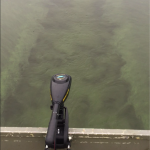Washington and Oregon lake lovers join forces in Portland for a joint OLA/WALPA conference: Pacific Northwest lakes in a changing world
by Rachael Gravon
Members and friends of the Oregon Lakes Association (OLA) and the Washington State Lake Protection Association (WALPA) converged on sunny Portland, Oregon this fall for the first joint conference between the two organizations since 2013. Nearly 200 attendees from throughout the Pacific Northwest came together to share their work, learn about limnological issues impacting the area, and of course enjoy the company of both new and long-time colleagues.
The state of water quality in Moses Lake
by Gene Welch, Prof. Emeritus, Civil and Environmental Engineering, University of Washington
The recent detection of algal toxins in Moses Lake has stirred interest in the condition of the lake’s water quality. Microcystin, a toxin produced by a blue-green alga (cyanobacterium), was found at high concentrations in near-shore accumulations of algal mass. Algae grow in the open water, but only blue-greens are buoyant and often rise to the surface, resulting in scums that can be blown by wind and accumulate near shore. Thus, concentrations of microcystin are usually highest in such accumulations.
Having a blast at Mount St. Helens: The adventure of studying log mat biofilm in Spirit Lake
by Emma Sevier and Kena Fox-Dobbs, Geology Department, University of Puget Sound
At first glance, Spirit Lake may look like many other lakes in the Cascades, clear blue water perched in a rugged alpine basin. However, this lake, within the blast zone of the 1980 Mount St. Helens eruption, has a more complex story to tell. The eruption of Mount St. Helens released a landslide of hot volcanic debris that sterilized Spirit Lake and restructured the lake basin. Today Spirit Lake is considerably shallower and has a greater surface area than the pre-eruption lake.
Lake Osoyoos in north central Washington forms a lake management district
by Ford Waterstrat and Lee Chapman. Lake Osoyoos Association
Lake Osoyoos in Okanogan County is an international lake of 5,750 acres that spans the U.S.-Canada border. The northern two-thirds of the lake is in Canada and the southern third is in Okanogan County, Washington.
Water flows into the lake from Canada’s Okanogan Watershed, starting in Penticton, BC, so essentially a river runs through Lake Osoyoos. Unfortunately, this allows uncaptured milfoil fragments to flow through the lake into the Okanogan River and thus to the Columbia.
Contrasting causes of hazardous algal blooms in two south Puget Sound (WA) lakes
by Jack Lindauer and Jeffrey Tepper, Geology Department, University of Puget Sound
The frequency of hazardous algal blooms (HABs) is increasing among lakes in the Pacific Northwest, as it is worldwide. While it is generally accepted that climate change and anthropogenic nutrient loading contribute to this increase, the specific driving forces can vary from one lake to the next.In this article we describe ongoing work at two public lakes in Pierce County,Washington, where, despite their close proximity to one another and similar geologic settings, the causes of HABs appear to differ.

